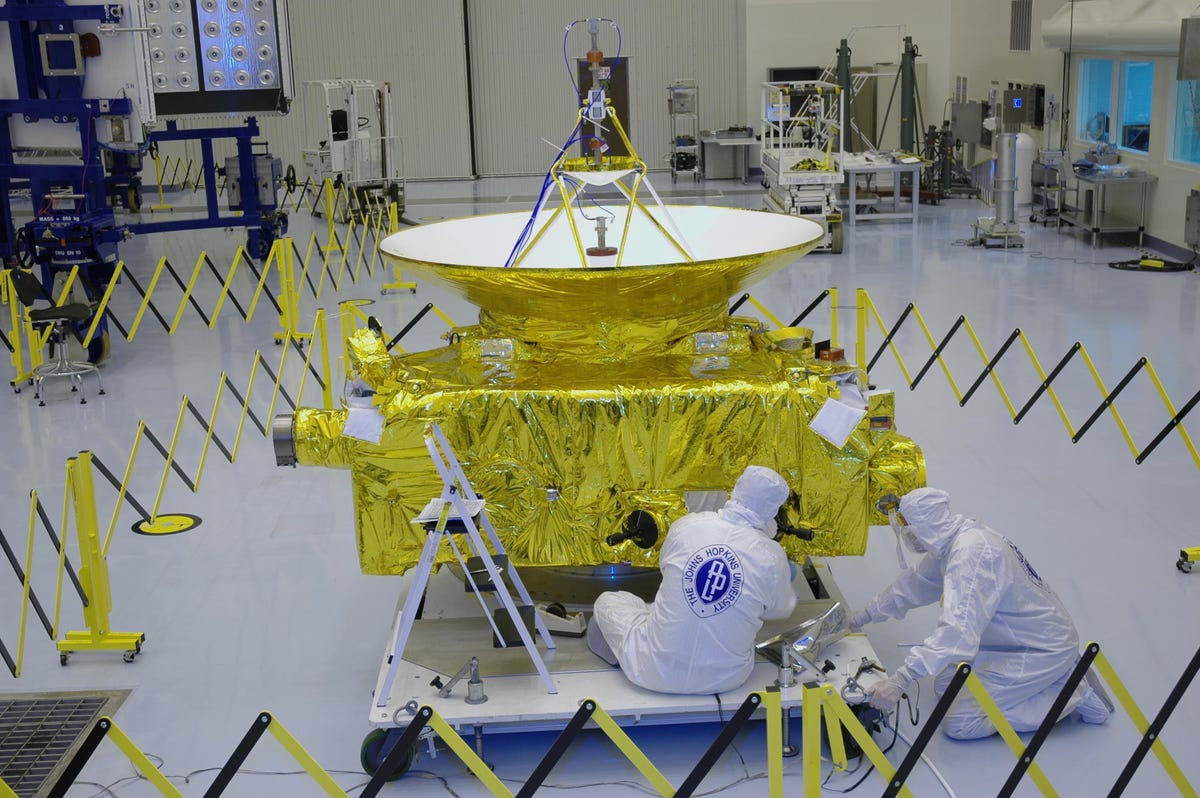New Horizons' journey to Pluto (pictures)
In more than nine years, NASA's New Horizons probe has taken an epic trek from Earth to Pluto as it sends back increasingly clearer images of the fascinating dwarf planet.

New Horizons in 2005
NASA's New Horizons spacecraft launched on a mission to study Pluto and its moons in early 2006. Its closest approach to the fascinating dwarf planet will be on July 14.
This photo from 2005 shows New Horizons in a clean room as technicians work on it before launch. The probe weighs a fairly light 1,060 pounds.
New Horizons launches in 2006
New Horizons spent over nine years traveling through our solar system to get to Pluto. The journey started on January 19, 2006, with a fiery launch. The probe caught a ride to space with an Atlas V rocket from the Kennedy Space Center in Florida.
New Horizons sees Pluto in color
The very first Pluto images from NASA's New Horizons spacecraft were little more than pixelated black-and-white blobs. Taken in April, this image, though still vague, is the first image the probe took in color and sent back to HQ on Earth. It hints at the dwarf planet's reddish hue. The moon Charon is also visible to the lower left.
Pluto's spots come into focus
NASA's New Horizons probe is closing in on its epic flyby of Pluto. As it moves nearer the target, it has taken ever-better images of the dwarf planet. These shots of Pluto, released July 1, show a fascinating series of dark spots along the equator.
"It's a real puzzle -- we don't know what the spots are, and we can't wait to find out," New Horizons principal investigator Alan Stern, of the Southwest Research Institute in Boulder, Colo., said in a statement.
Pluto's 'heart' appears
A heart-shaped surface feature is visible in the lower right of this image of Pluto taken by NASA's New Horizons probe. The dark area to the lower left is unofficially known as "the whale." The spacecraft captured the picture, taken July 7, at a distance of 5 million miles away as it began its flyby sequence to take it up close to the dwarf planet.
Charon, Pluto's biggest moon
NASA's New Horizons probe captured this image of Pluto's largest moon Charon on July 11 near the beginning of a flyby of the dwarf planet. NASA describes Charon as "a world of chasms and craters."
The dark area near the top is the north pole region. Other dark spots indicate impact craters and possible chasms. Charon is about half the size of Pluto.
A final view of Pluto's dark spots
Dwarf planet Pluto is giving scientists plenty to think about as NASA's New Horizons mission has photographed some odd surface features. Of note are a series of four dark spots near the equator.
This image, taken July 11, is the closest look New Horizons was able to capture of the spots. The dark areas are around 300 miles across. The origin of the spots remains a mystery.

Artist's view of New Horizons
NASA's New Horizons probe doesn't have a film crew flying along behind it as it approaches Pluto. The next best thing we have is this artist's concept of what the spacecraft would look like as it buzzes as close as 7,800 miles away from the dwarf planet.
Earth and Pluto compared
This mock-up shows how Pluto and Charon compare to Earth, if placed slightly above Earth's surface and viewed from a great distance. Measurements from New Horizons show that Pluto has a diameter of 2,370km, 18.5 percent that of Earth's, while Charon has a diameter of 1,208km, 9.5 percent of Earth's.
Pluto gets a close-up
Just before the flyby, NASA posted this photo taken by New Horizons at about 4 p.m. EDT on July 13, about 16 hours before the moment of closest approach. The picture was taken around 476,000 miles (766,000 kilometers) from the surface, and clearly shows the dwarf planet's heart-shaped feature.
False color Pluto and Charon
On July 13, one day before its closet approach to Pluto, NASA's New Horizons probe took this colorful image of the dwarf planet and its biggest moon Charon. This image is a veritable technicolor explosion compared to other pictures since it shows the two space objects in exaggerated colors.
The false-color photo makes it easy to see surface differences by highlighting craters, ice and other features that would meld together in a normal color image.

